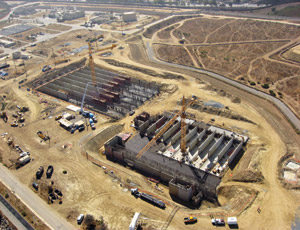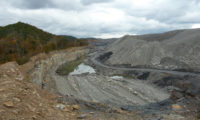America’s aging infrastructure—which, in 2009, the American Society of Civil Engineers estimated would require $2.2 trillion over a five-year period—continues to provide work for environmental contractors through American Recovery and Reinvestment funding.

Specifically, contractors are finding work in assuring the safety and reliability of drinking-water supplies, maintaining compliance with federal and state water- quality regulations and fulfilling mandates to rectify problems with combined and sanitary sewer overflows.
“So many treatment facilities around the country are aging or under capacity, so there’s always a need for improvements,” says Laura D’Ardenne, manager of sustainable construction for PCL Construction Enterprises, Denver. The need is acute in areas where quality water is typically in short supply, she says.
Examples of ARRA-funded projects include the $87.6-million upgrade to the 25-MGD South Bay Wastewater Treatment Plant in San Ysidro, Calif., and the augmentation of the 220-ft-tall San Vincente Dam in San Diego County, Calif., with a 117-ft-high roller-compacted concrete addition to provide more flexibility for water deliveries to the region.
The American Recovery and Reinvestment Act also has played a role in the environmental market, helping fund $62 million of efficiency and water-quality improvements at the Columbia, Mo., Regional Wastewater Treatment Plant, as well as the San Jacinto Valley Regional Water Reclamation Facility’s $112-million expansion, which will increase the plant’s capacity to 15.4 million gallons per day to meet California’s stringent treatment requirements.
But Bob Uhler, President and CEO of MWH, Broomfield, Colo., says environmental infrastructure’s other primary drivers—regulatory compliance and population movement—have had less of an influence in recent months. “There have been few new consent decrees imposed during the recession, and only some of the historic growth markets are showing signs of rebounding,” he says. Uhler says Texas has been an area of positive activity for the firm: MWH is serving as construction manager-at-risk for Austin’s $508-million, 300-million-gal-per-day Water Treatment Plant No. 4. However, Uhler observes that, while water and wastewater system owners receive a steady stream of revenue from service fees, “most are sitting on their resources until conditions improve.” Furthermore, environmental contractors are finding plenty of competition for new projects from firms that have traditionally focused on other sectors.
“Some clients are adding prequalification steps to their selection process so they can set aside firms who may be unable to perform,” says Dan McCarthy, president and CEO of Black & Veatch’s water business.
The trend toward discount construction pricing so far has not affected the market for site-cleanup services because the projects’ highly complex risks and technical requirements limit the number of new entrants. Moreover, Dean Pisani, CEO of ENTACT LLC, Dallas, says 2010 has brought “a positive change in our customer’s buying parameters. While price is important, it’s not the only significant parameter.”
“At the highest level, the economy is hurting, but there are places across the country that are trying to grow, and [they] have properties they want to clean up,” agrees Pat McCann, president and CEO of Weston Solutions, West Chester, Pa., whose firm is overseeing the redevelopment of a four-acre former manufactured gas plant site in downtown Honolulu into a condominium complex.




Post a comment to this article
Report Abusive Comment